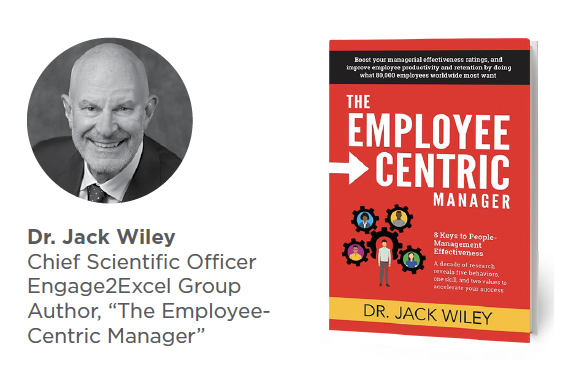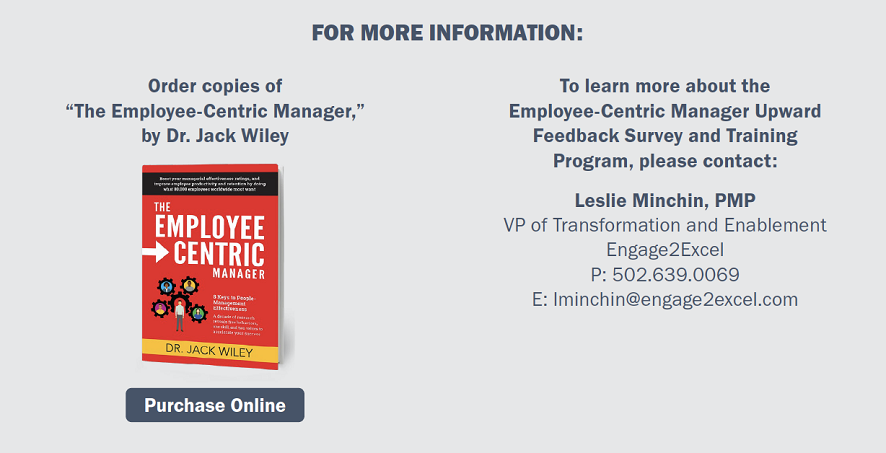What Can You Do About Manager Disengagement?

Manager engagement is the extent to which managers are motivated to contribute to organizational success and are willing to apply discretionary effort to accomplish tasks important to the achievement of organizational goals.
— STRATEGIC EMPLOYEE SURVEYS, DR. JACK WILEY
Introduction
In the post-pandemic work environment, manager disengagement has become a growing problem that impacts companies of every size in every industry. It can harm employee engagement, voluntary turnover, team cohesion and performance.
Recently, Dr. Jack Wiley, chief scientific officer for Engage2Excel Group, led a roundtable discussion about manager engagement and disengagement with the Trendicators Advisory Board. Roundtable participants unanimously stated that managers are increasingly stressed and need help dealing with today’s people management challenges. This report summarizes key takeaways from the discussion and serves as a practical guide to how organizations can better understand and address manager disengagement.
An award-winning organizational psychologist, researcher and leadership consultant, Dr. Wiley has over 30 years of experience studying what employees most want and the organizational design factors that best promote business success.
In his latest book, “The Employee-Centric Manager,” Dr. Wiley presents eight keys to effective people management based on a decade of research that reveals what 80,000 employees in 27 countries most want from managers. The book has earned widespread praise from organizational psychology experts, HR professionals, business leaders and managers.
The book’s popularity led Dr. Wiley to develop a comprehensive, scalable solution for organizations to use in assessing, training and improving employee-centric management skills. An overview of this solution is provided on pages 7–10.
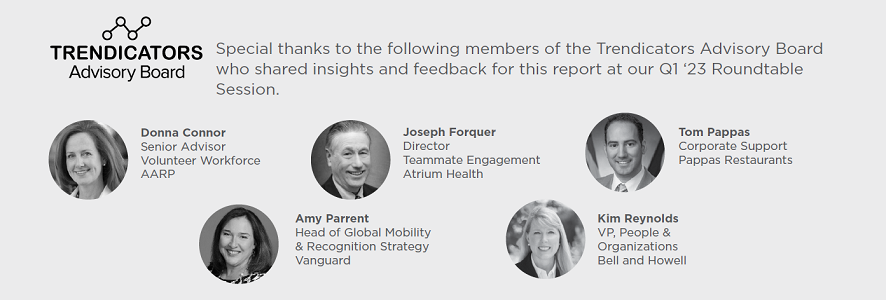
Trendicators is the research division of the E2E group of companies, leading providers of engaging career and consumer experiences. Trendicators provides original HR research, and reports on insights and best practices from industry leaders and experts.
Download
 hbspt.cta.load(123973, '2e557474-9b2e-4b3b-b113-2ebdb730f057', {"useNewLoader":"true","region":"na1"});
hbspt.cta.load(123973, '2e557474-9b2e-4b3b-b113-2ebdb730f057', {"useNewLoader":"true","region":"na1"});
How Managers Influence Employee Engagement
Few variables have greater influence on employee engagement, retention and productivity than employees’ relationship with their immediate supervisor. In his book, “The Employee-Centric Manager,” Dr. Wiley identifies eight attributes that 80,000 employees in 27 countries want most from managers. As shown in Figure 1, these include five behaviors, one skill and two values. These eight attributes, none difficult to understand, define an employee-centric manager.
Managers who demonstrate these attributes are likelier to get along well with employees, and their team members are likelier to get along well with each other. In addition, these managers’ teams are more highly engaged in their work and perform better. Employee-centric managers also achieve superior performance reviews and maximize rewards. In other words, employee-centric managers are most likely to achieve goals.
Dr. Wiley analyzed the performance of 1,000 U.S. managers to understand how employee-centric managers influenced employee engagement, team cohesion and team engagement. As Figure 2 illustrates, bottom-rated managers are, at best, accomplishing 41% of their potential. Middle-rated managers achieve 71% to 76% of their potential for these important outcomes. And top-rated managers achieve almost all their potential for having an engaged workforce, internally cohesive teams and top performance.
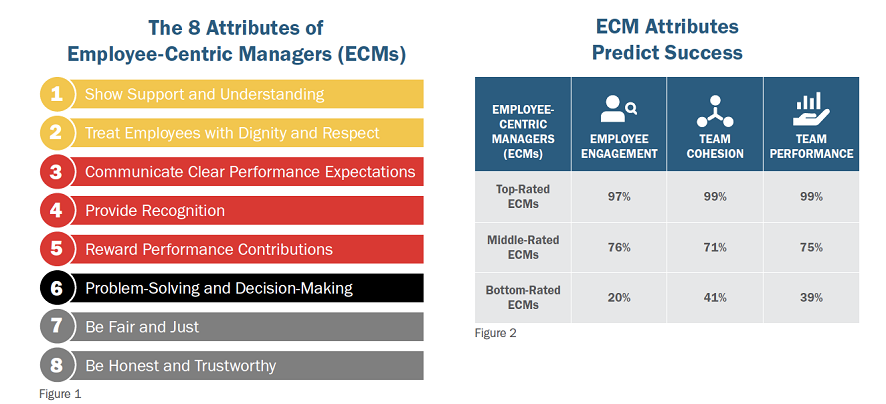
Download
 hbspt.cta.load(123973, '2e557474-9b2e-4b3b-b113-2ebdb730f057', {"useNewLoader":"true","region":"na1"});
hbspt.cta.load(123973, '2e557474-9b2e-4b3b-b113-2ebdb730f057', {"useNewLoader":"true","region":"na1"});
Behaviors of Disengaged Managers
We’ve all seen the headlines about “quiet quitting.” This term is just a clever synonym for “employee disengagement.” Quiet quitting, or disengagement, is when workers fulfill the minimum requirements of their jobs, putting in no more time, effort or enthusiasm than needed to remain employed. While only modest drops in overall employee engagement levels were reported in national surveys in 2021–2022, the pandemic has undoubtedly profoundly affected the workplace and attitudes toward work.
When employees disengage, they exhibit significantly higher rates of absenteeism, cause more accidents and are responsible for higher error rates and defects. But how do disengaged managers behave in the workplace, and how do these behaviors affect their direct reports?
Disengaged Managers Demotivate Employees: Disengaged managers withdraw the support they offer. They reduce the recognition they provide. Disengaged managers are slower and less effective at problem-solving and decision-making, which influences the daily productivity of their direct reports. They are less effective in communicating performance expectations and providing useful coaching. These behaviors contradict what employees most want from managers.
Disengaged managers hinder the potential for high-quality individual and team relationships and reduce the potential for optimal performance. The challenge is to answer why these problems exist and how to improve them.

Download
 hbspt.cta.load(123973, '2e557474-9b2e-4b3b-b113-2ebdb730f057', {"useNewLoader":"true","region":"na1"});
hbspt.cta.load(123973, '2e557474-9b2e-4b3b-b113-2ebdb730f057', {"useNewLoader":"true","region":"na1"});
Pandemic and Post-Pandemic Realities
As stated, the pandemic profoundly changed the workplace and attitudes toward work. A 2020 Qualtrics/SAP study in the “Harvard Business Review” reported that:
- 53% of employees felt more exhausted from work now than before the pandemic.
- 57% experienced worse anxiety caused by work-related factors.
- 75% of workers reported feeling socially isolated.
During the pandemic, we saw increased workplace stress, the implementation of new systems, and — in many cases — the lack of technology to meet new, increasing demands, especially concerning remote work. Most fundamentally, managers lacked training on how to interact with employees in this new environment.
Coming out of the pandemic, faced with record-low unemployment and rising inflation, we experienced acute staffing challenges, greater demand for attraction and retention and quiet quitting. These challenges are complicated by the competitiveness of the talent marketplace, increased attrition and a disconnect between employees and managers, especially higher-level managers, over return-to-work policies.
This has created a whipsaw effect for managers. They are held accountable for performance but lack control over — and support for — new workplace realities. That means managers are more stressed than ever and increasingly disengaged. HR leaders admit that they lack effective tools to address manager disengagement.
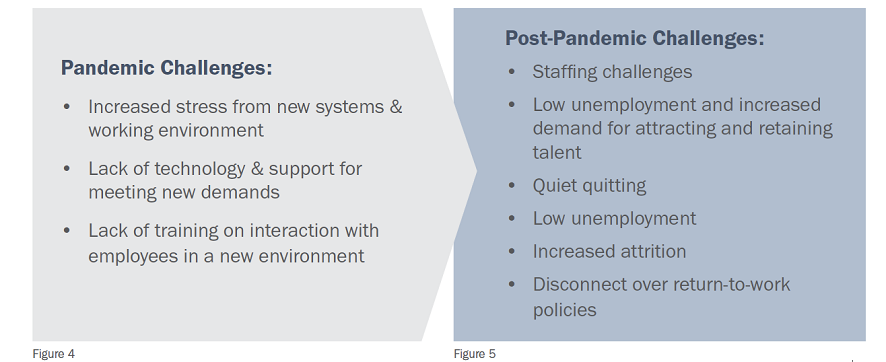
Download
 hbspt.cta.load(123973, '2e557474-9b2e-4b3b-b113-2ebdb730f057', {"useNewLoader":"true","region":"na1"});
hbspt.cta.load(123973, '2e557474-9b2e-4b3b-b113-2ebdb730f057', {"useNewLoader":"true","region":"na1"});
A Solution for Overcoming Manager Disengagement
The popularity of his book, “The Employee-Centric Manager,” led Dr. Wiley to develop a comprehensive and scalable solution for organizations to use in assessing, training and improving employee-centric management skills. The solution involves three major components.
Assess: The first component assesses the extent to which managers display the eight attributes comprising the employee-centric manager. These attributes directly relate to work experience, employee engagement, internal team cohesion and performance. Dr. Wiley created a 65-item, 180-degree upward feedback survey that measures all eight attributes and overall performance. For each of these factors, employees are asked to provide, in their own words, recommendations for one thing that their manager could do to improve on the measured factor.
Report: A report is generated on how the managers are doing. The subordinate raters’ scores are presented and compared with how the managers rated themselves. Managers gain awareness of how their employees view them. The report allows managers to compare every attribute and overall performance to what is typical in terms of how managers are rated.
Training: A six-and-a-half-hour training program is delivered in a face-to-face context. The program is designed to help improve managers’ behaviors and their skills for problem-solving and decision-making. It also helps them understand how they can behaviorally display better values in terms of fairness and justice as well as honesty and trustworthiness.
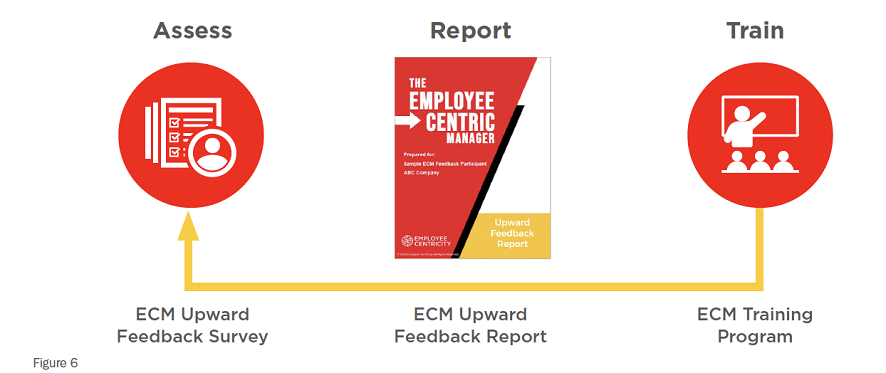
Download
 hbspt.cta.load(123973, '2e557474-9b2e-4b3b-b113-2ebdb730f057', {"useNewLoader":"true","region":"na1"});
hbspt.cta.load(123973, '2e557474-9b2e-4b3b-b113-2ebdb730f057', {"useNewLoader":"true","region":"na1"});
What Drives Manager Engagement?
The key factors that determine manager engagement have been tracked in a nationwide Trendicators research survey over the past eight years. Below are the factors directly impacting overall engagement for middle managers (Figure 7) and first-line supervisors (Figure 8).
Middle Managers: Drivers two through five for middle managers deal with work–life balance, career goals, skill development and two-way communication. Driver one, confidence in the future, is indirectly related to drivers two through five. Not surprisingly, confidence in their organization’s future is the most important driver for middle-manager engagement.
First-Line Supervisors: Engagement drivers for first-line supervisors are quite different, sharing only one common variable with middle managers: achieving career goals. Other key drivers for first-line supervisors are safety, skills and abilities, senior management and the opinions and thinking of the people they work with.
Cause for Concern: Overall managerial attitudes are declining. Only 60% of middle managers in the United States today believe honest two-way communication exists in their organization. Likewise, only 53% of first-line supervisors today agree that senior managers demonstrate that employees are important to the organization’s success.
These two indicators alone show that attitudes among the managerial workforce are declining in areas that are considered significant.
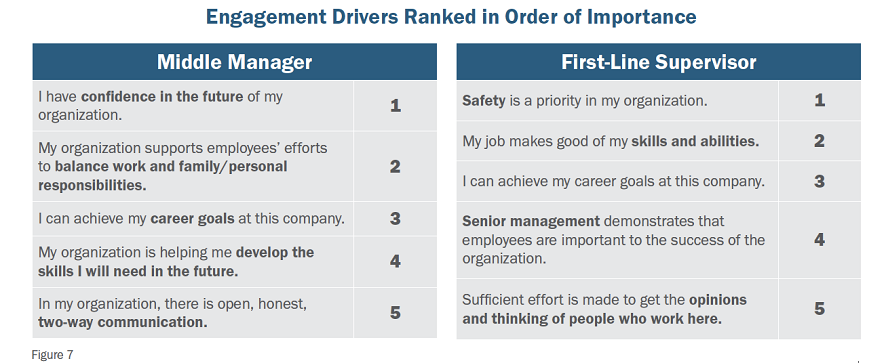
Download
 hbspt.cta.load(123973, '2e557474-9b2e-4b3b-b113-2ebdb730f057', {"useNewLoader":"true","region":"na1"});
hbspt.cta.load(123973, '2e557474-9b2e-4b3b-b113-2ebdb730f057', {"useNewLoader":"true","region":"na1"});
Employee-Centric Manager Upward Feedback Survey
The Employee-Centric Manager Upward Feedback Survey indicates areas for improvement based on feedback from subordinates on all eight attributes of the employee-centric manager taxonomy and on overall performance.
Figure 8 shows the recent ratings for three individuals from different companies and industries: a Fortune 500 chief human resources officer (CHRO), a division manager and a first-line supervisor. Results are color-coded to indicate if a score is high, medium-high, medium-low or low, lending further context to the results.
Actionable Insights for Improvement: The upward feedback survey provides actionable insights that managers can use to improve performance. This information resides in a database that enables the manager to see their scores and how their scores compare with the U.S. workforce of managers.
As managers go through the Employee-Centric Manager Training Program, they develop an action plan that addresses what they regard as their top priorities for improvement. The upward feedback survey is repeated between six and nine months after training to benchmark improvement and determines areas for further development.
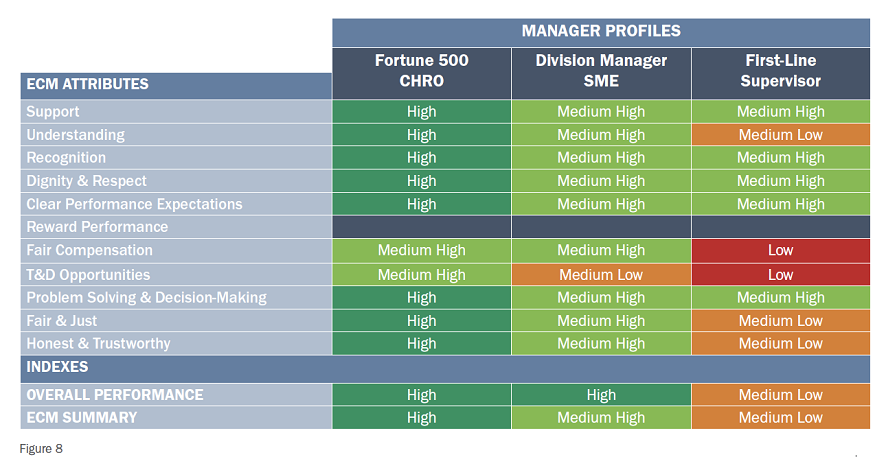
Download
 hbspt.cta.load(123973, '2e557474-9b2e-4b3b-b113-2ebdb730f057', {"useNewLoader":"true","region":"na1"});
hbspt.cta.load(123973, '2e557474-9b2e-4b3b-b113-2ebdb730f057', {"useNewLoader":"true","region":"na1"});
Employee-Centric Manager Training Program
The Employee-Centric Manager Training Program aligns with the typical cycle of employee development. It starts with creating an awareness of a need for change, which happens with the Upward Feedback Survey results.
Providing specific guidance through training on how to behaviorally improve, developing an action plan based on data to identify the most important priorities and sharing that action plan with an immediate supervisor creates increased accountability. A second assessment is conducted between six and nine months later to benchmark improvement and determine areas for further development.
This is a classic approach to human resource development, particularly on an individual basis. 100% of the managers who have completed the Employee-Centric Manager Training Program indicated satisfaction with the overall program. Representative verbatims are presented in Figure 10.
Managers regard the focus on the upward feedback report as extremely valuable in creating awareness. In particular, the guidance provided on how to improve through the development of the managers’ action plan is essential.
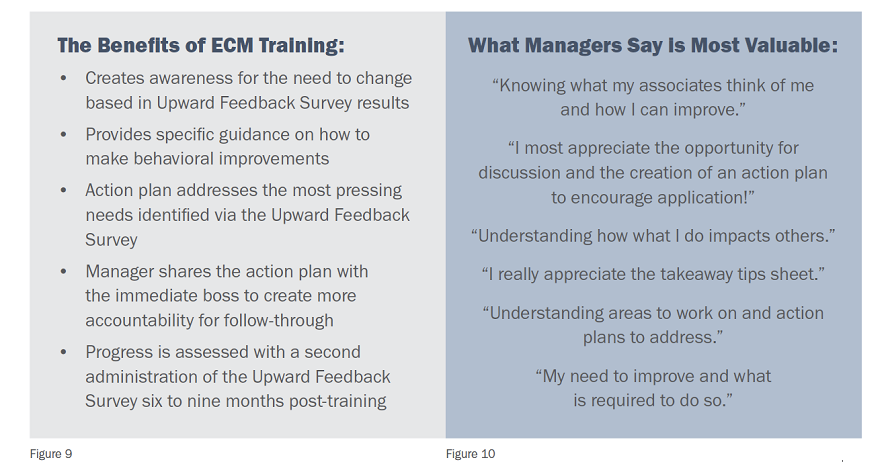
Download
 hbspt.cta.load(123973, '2e557474-9b2e-4b3b-b113-2ebdb730f057', {"useNewLoader":"true","region":"na1"});
hbspt.cta.load(123973, '2e557474-9b2e-4b3b-b113-2ebdb730f057', {"useNewLoader":"true","region":"na1"});
Summary: Overcoming the Challenges of Manager Disengagement
Managers are the catalysts who define, shape and help influence the attitudes that determine corporate culture. Overcoming manager disengagement is essential because it negatively affects employee engagement, team performance and cohesion. Industry research indicates that in the U.S. today, over 70% of managers have received no people management training, or their training was capped at just four hours.
Managers need help overcoming the challenges of people management in the post-pandemic work environment, which is vital because of the whipsaw effect and distress that has been produced.
Companies that invest helping managers succeed receive exponential returns in achieving their objectives. Greater discretionary effort by managers and employees themselves results in lower absenteeism, reduced turnover, and improvements in team productivity. Years of research prove that workforce engagement is a reliable predictor of business success.
Download
 hbspt.cta.load(123973, '2e557474-9b2e-4b3b-b113-2ebdb730f057', {"useNewLoader":"true","region":"na1"});
hbspt.cta.load(123973, '2e557474-9b2e-4b3b-b113-2ebdb730f057', {"useNewLoader":"true","region":"na1"});
